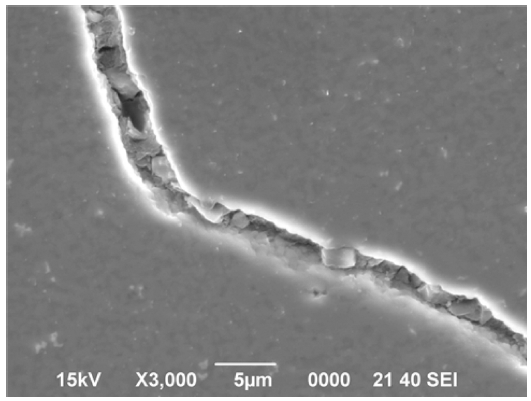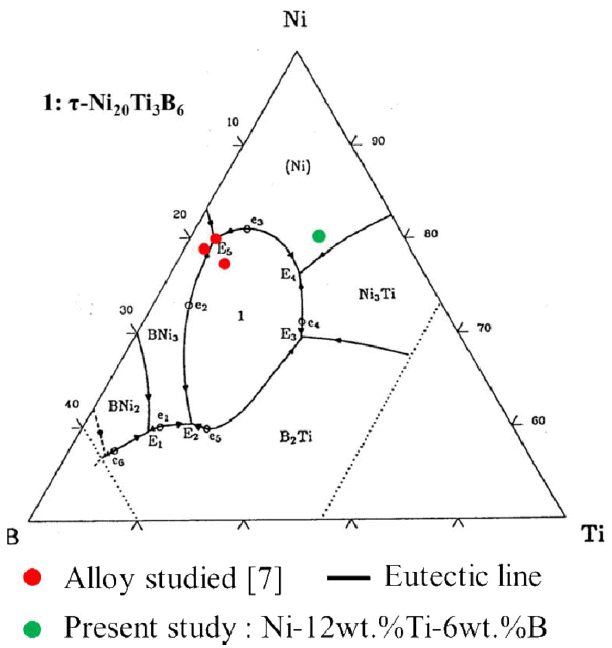Search
- Page Path
- HOME > Search
- [Korean]
- A Study on the Debinding Process of High Purity Alumina Ceramic Fabricated by DLP 3D Printing
- Hyun-Been Lee, Hye-Ji Lee, Kyung-Ho Kim, Sung-Soo Ryu, Yoonsoo Han
- J Korean Powder Metall Inst. 2020;27(6):490-497. Published online December 1, 2020
- DOI: https://doi.org/10.4150/KPMI.2020.27.6.490

- 730 View
- 6 Download
- 1 Citations
-
 Abstract
Abstract
 PDF
PDF The 3D printing process provides a higher degree of freedom when designing ceramic parts than the conventional press forming process. However, the generation and growth of the microcracks induced during heat treatment is thought to be due to the occurrence of local tensile stress caused by the thermal decomposition of the binder inside the green body. In this study, an alumina columnar specimen, which is a representative ceramic material, is fabricated using the digital light process (DLP) 3D printing method. DTG analysis is performed to investigate the cause of the occurrence of microcracks by analyzing the debinding process in which microcracks are mainly generated. HDDA of epoxy acrylates, which is the main binder, rapidly debinded in the range of 200 to 500°C, and microcracks are observed because of real-time microscopic image observation. For mitigating the rapid debinding process of HDDA, other types of acrylates PETA, PUA, and MMA are added, and the effect of these additives on the debinding rate is investigated. By analyzing the DTG in the 25 to 300°C region, it is confirmed that the PETA monomer and the PUA monomer can suppress the rapid decomposition rate of HDDA in this temperature range.
-
Citations
Citations to this article as recorded by- Fabrication and Optimization of Al2O3 Microchannels Using DLP-Based 3D Printing
Jun-Min Cho, Yong-Jun Seo, Yoon-Soo Han
Journal of Powder Materials.2025; 32(1): 59. CrossRef
- Fabrication and Optimization of Al2O3 Microchannels Using DLP-Based 3D Printing
- [English]
- Study of Fabrication and Improvement of Mechanical Properties of Mg-based Inorganic Fiber using Reflux Process and Silica Coating
- Ri Yu, YooJin Kim
- J Korean Powder Metall Inst. 2019;26(3):195-200. Published online June 1, 2019
- DOI: https://doi.org/10.4150/KPMI.2019.26.3.195

- 524 View
- 1 Download
- 3 Citations
-
 Abstract
Abstract
 PDF
PDF Whisker-type magnesium hydroxide sulfate hydrate (5Mg(OH)2·MgSO4·3H2O, abbreviated 513 MHSH), is used in filler and flame-retardant composites based on its hydrate phase and its ability to undergo endothermic dehydration in fire conditions, respectively. In general, the length of whiskers is determined according to various synthetic conditions in a hydrothermal reaction with high temperature (~180°C). In this work, high-quality 513 MHSH whiskers are synthesized by controlling the concentration of the raw material in ambient conditions without high pressure. Particularly, the concentration of the starting material is closely related to the length, width, and purity of MHSH. In addition, a ceramic-coating system is adopted to enhance the mechanical properties and thermal stability of the MHSH whiskers. The physical properties of the silica-coated MHSH are characterized by an abrasion test, thermogravimetric analysis, and transmission electron microscopy.
-
Citations
Citations to this article as recorded by- Effect of sulfate ion on synthesis of 5 Mg(OH)2·MgSO4·3H2O whiskers using non-hydrothermal method with acid catalyst
Areum Choi, Nuri Oh, YooJin Kim
Journal of the Korean Ceramic Society.2022; 59(2): 224. CrossRef - Study of SiO2 coating and carboxylic surface-modification on Mg-based inorganic fiber by one-step reflux reaction
Minsol Park, Areum Choi, Seiki Kim, Wooyoung Shim, YooJin Kim
Journal of the Korean Ceramic Society.2022; 59(6): 869. CrossRef - Effect of H2SO4 and Reaction Time on Synthesis of 5Mg(OH)2∙MgSO4∙3H2O Whiskers using Hydrothermal Reaction
Areum Choi, Nuri Oh, YooJin Kim
Journal of Korean Powder Metallurgy Institute.2020; 27(5): 401. CrossRef
- Effect of sulfate ion on synthesis of 5 Mg(OH)2·MgSO4·3H2O whiskers using non-hydrothermal method with acid catalyst
- [English]
- A Study on Synthesis of Ni-Ti-B Alloy by Mechanical Alloying from Elemental Component Powder
- Jung Geun Kim, Yong Ho Park
- J Korean Powder Metall Inst. 2016;23(3):202-206. Published online June 1, 2016
- DOI: https://doi.org/10.4150/KPMI.2016.23.3.202

- 648 View
- 2 Download
- 2 Citations
-
 Abstract
Abstract
 PDF
PDF A Ni-Ti-B alloy powder prepared by mechanical alloying (MA) of individual Ni, Ti, and B components is examined with the aim of elucidating the phase transitions and crystallization during heat treatment. Ti and B atoms penetrating into the Ni lattice result in a Ni (Ti, B) solid solution and an amorphous phase. Differential thermal analysis (DTA) reveals peaks related to the decomposition of the metastable Ni (Ti, B) solid solution and the separation of equilibrium Ni3Ti, TiB2, and τ-Ni20Ti3B6 phases. The exothermal effects in the DTA curves move to lower temperatures with increasing milling time. The formation of a TiB2 phase by annealing indicates that the mechanochemical reaction of the Ni-Ti-B alloy does not comply with the alloy composition in the ternary phase diagram, and Ti-B bonds are found to be more preferable than Ni-B bonds.
-
Citations
Citations to this article as recorded by- Solid‐State Synthesis and Characterization of the Stable Nanostructured Ni21Ti2B6 Phase
Tuncay Simsek, Baris Avar, Sadan Ozcan, Arun K. Chattopadhyay, Bora Kalkan
physica status solidi (b).2021;[Epub] CrossRef - Synthesis and analysis of nanocrystalline β1-Cu3Al and β2-NiAl intermetallic-reinforced aluminum matrix composite by high energy ball milling
Hong-Hai Nguyen, Minh-Thuyet Nguyen, Won Joo Kim, Jin-Chun Kim
Metals and Materials International.2017; 23(1): 202. CrossRef
- Solid‐State Synthesis and Characterization of the Stable Nanostructured Ni21Ti2B6 Phase
TOP
 kpmi
kpmi


 First
First Prev
Prev


